This Best Practice was first published in the Gender Intelligence Report 2023.
In today’s evolving workplace, flexibility has become more than just a desirable perk – it is now a critical business imperative. At EY, we deeply understand and appreciate the diverse values, needs, and aspirations of our employees (and future employees), as well as the increasing blurring of boundaries between personal and professional lives. In response, we have embarked on a transformative journey to create a culture of flexibility that caters to the unique circumstances of our workforce. We were determined to make flexible working a reality and seamlessly integrate it into our organizational practices. The biggest challenges were to dispel the widespread assumption that flexible working arrangements are incompatible with client-facing roles in the fast-paced and demanding consulting industry and to encourage employees to utilize the flexibility that has become possible and acceptable.

“Being transparent about flexible working arrangements is paramount for a trusted client relationship. Clients are always very supportive and appreciate the role modeling effect it has for their teams.” – Isabelle Staiger, Partner, People Advisory Services
A dedicated project team began by presenting an official business case to our executive leadership team. This comprehensive presentation included data-driven insights on the current situation, an explanation of the benefits associated with the desired state, and compelling stories shared by employees who had embraced flexible working arrangements. Hearing directly from our employees who work flexibly and achieve high performance proved to be incredibly powerful. It helped our leaders recognize the mutual gains in meeting both performance and work-life needs and allowed them to see that flexibility is possible even in demanding roles. This connection got us the support and engagement from the leadership team.

“Hearing from our employees was powerful. It helped us connect, learn and made previously invisible flexibility arrangements visible, opening up a new perspective.” – Marc Filleux, Partner, Strategy and Transactions
Once we obtained the ‘go-ahead’, we delved deeper into the complexities and individuality of each situation to ensure that our solution would meet the needs of our people and the business. Through personas and focus group conversations with employees from different departments, ranks, generations, and work arrangements, we uncovered key findings that shaped our approach:
Acknowledging the diverse needs for flexibility, we devised a structured three-step methodology:
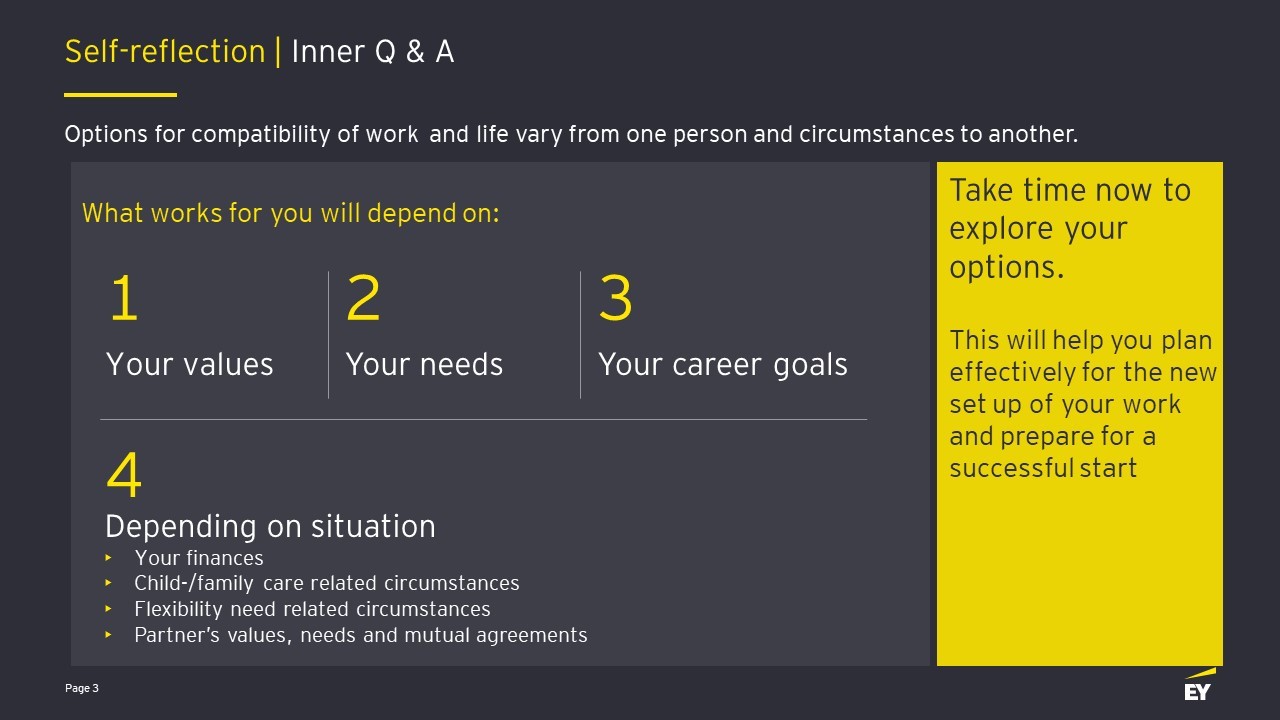
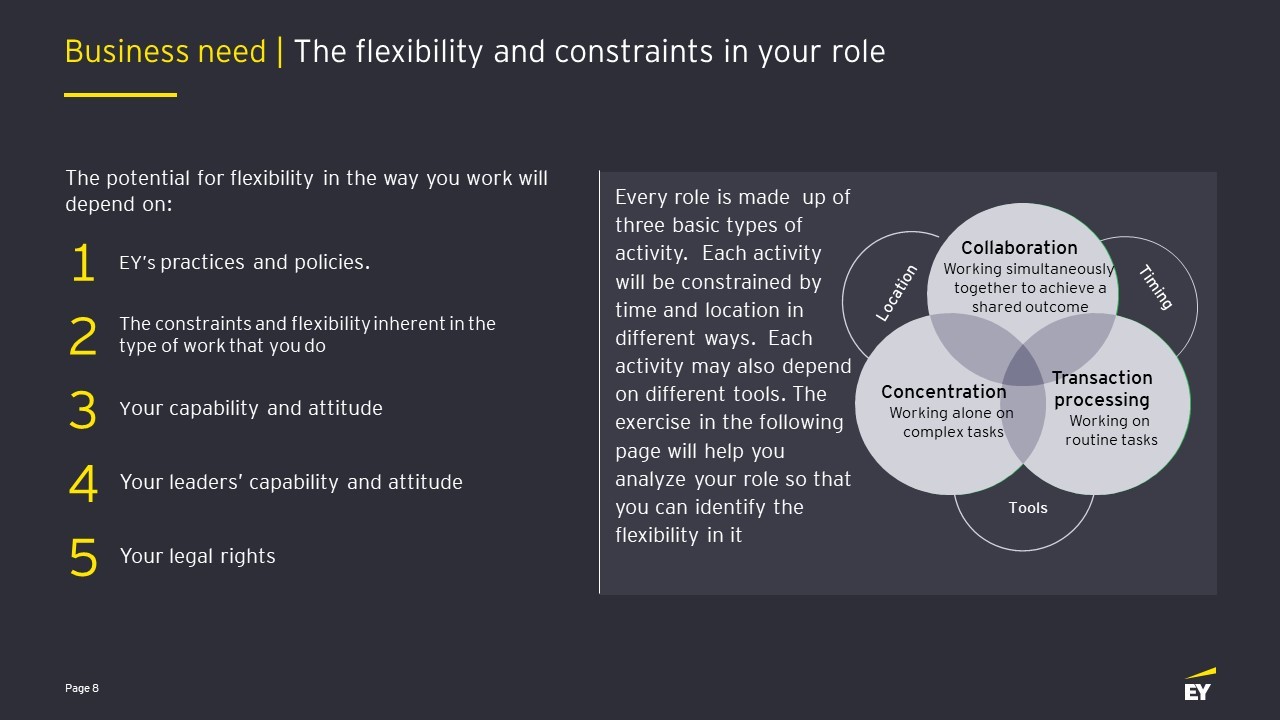
Due to the individuality of flex working and the 3-step methodology that employees go through, we have a wide range of models, from working 100% while choosing when to start and end workday, to working 60%-80%, to job sharing (see our Wheel of possibilities).
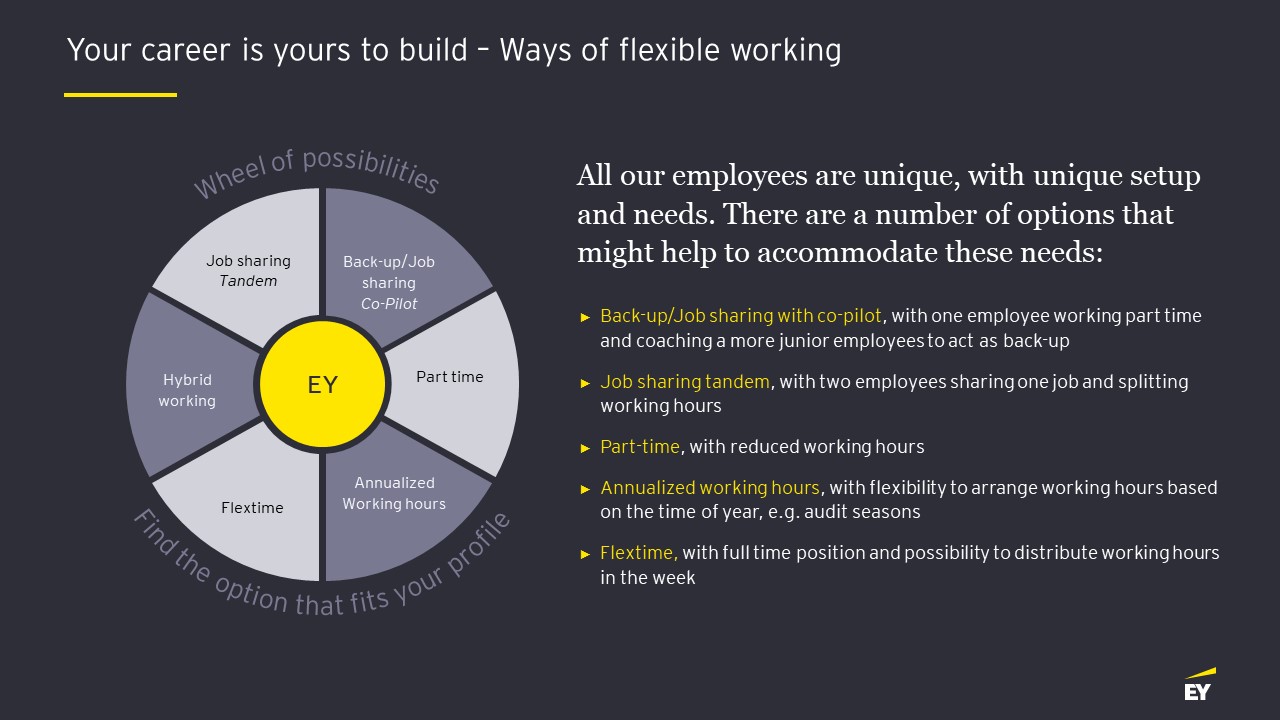

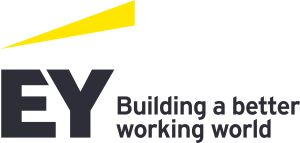
Flexibility concerns everyone, whether as an employee on a flexible working arrangement, as their manager, or simply as a colleague. All have a responsibility to make it work. We have developed comprehensive guides that provide an overview of these responsibilities and how to meet them (see charts below), as well as key expectations when entering into a flexible working arrangement.
Individual’s responsibilities:
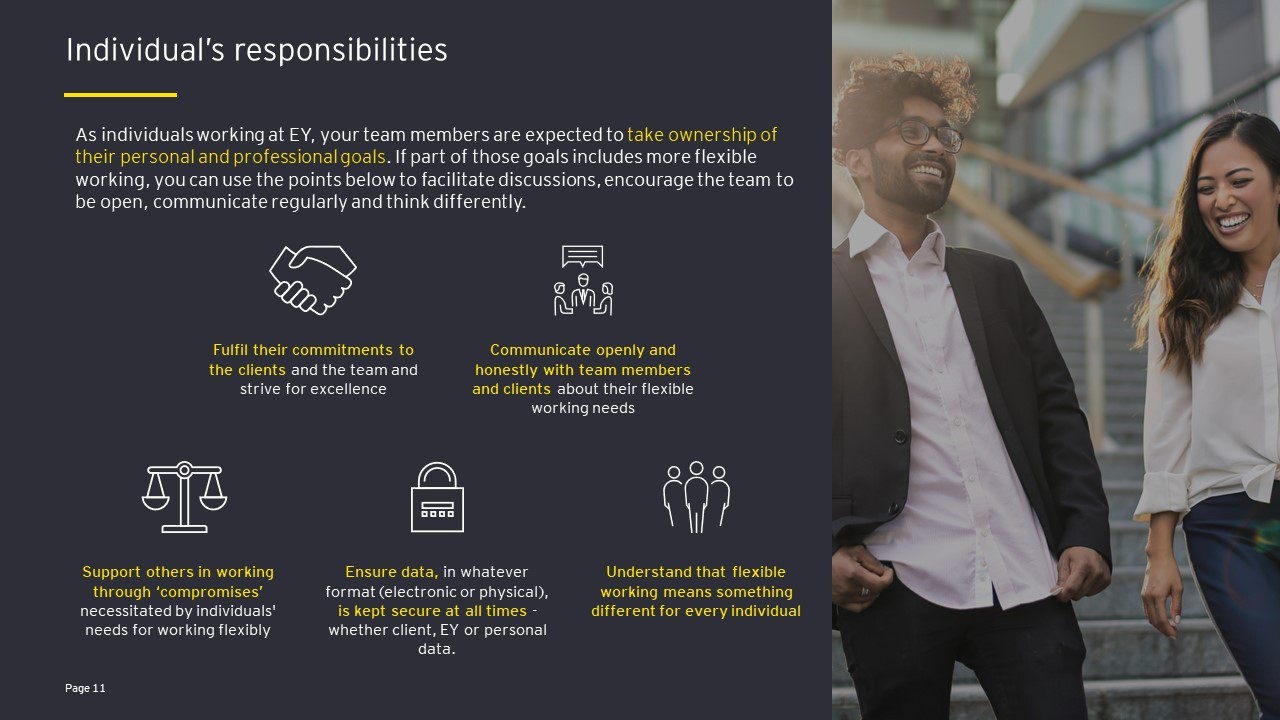
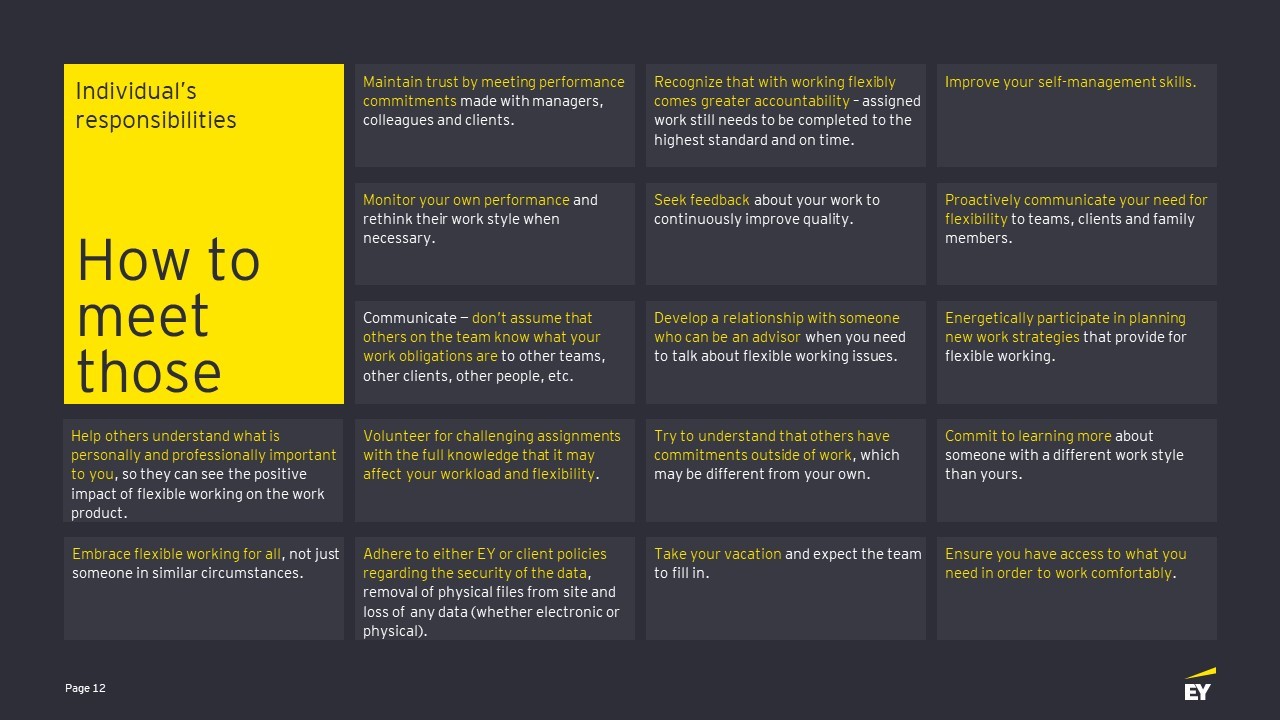
Manager’s responsibilities:
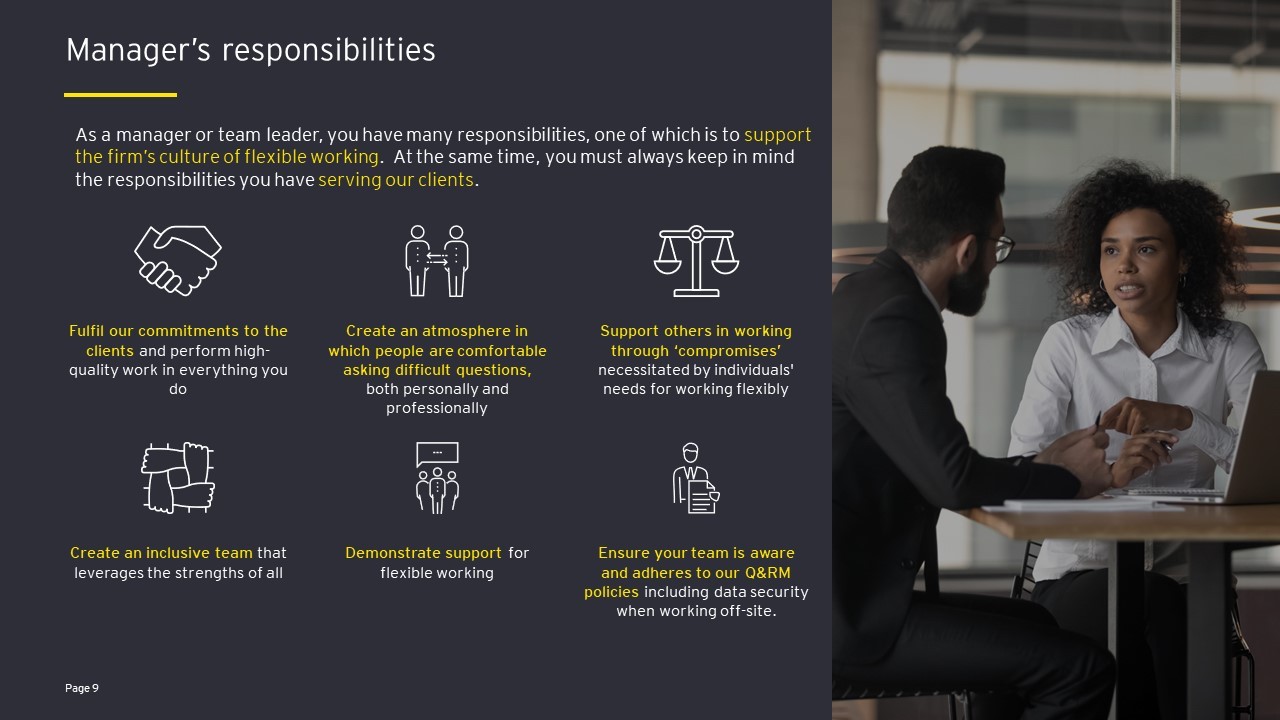
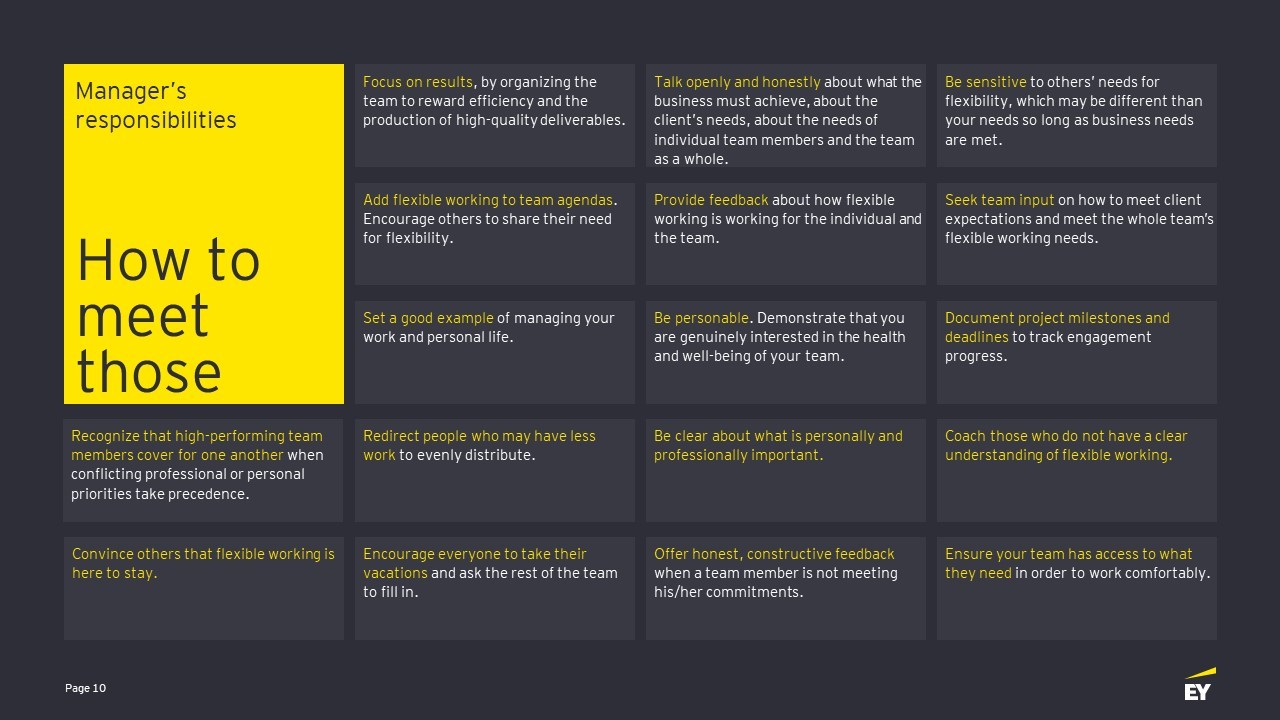
We have included information on flexible working in our onboarding documentation and continuously reference links to resources on different communication channels, such as intranet pages, news articles, or related emails. We provided training to our HR Business Partners and Resource Managers on flexible working options and equipped them with supporting materials. Additionally, we have enhanced our benefits package to include extended parental leave and phased return options for both parents and all family models, reinforcing flexibility as an integral part of our organizational culture.
Flexibility is both a top-down and a bottom-up process. Success depends on supportive leaders (sponsorship) and committed employees.
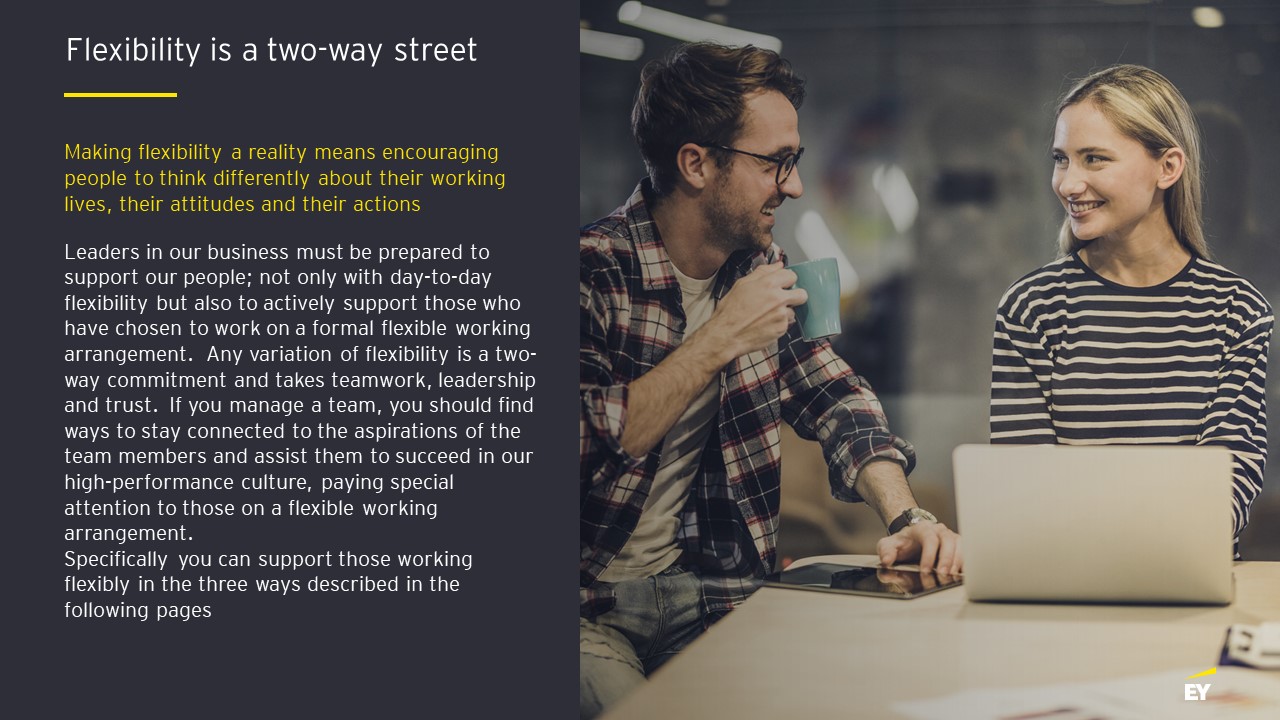
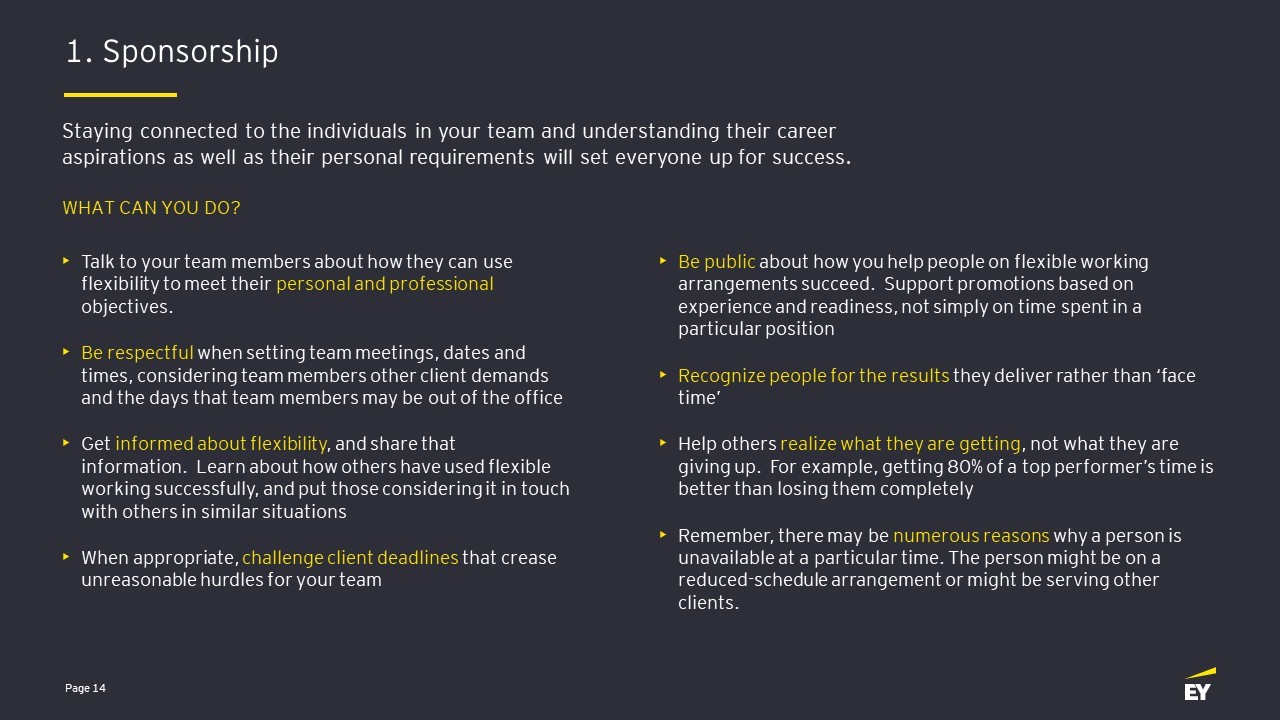
To foster engagement and commitment, we harnessed the power of storytelling. By sharing inspiring stories of employees who have thrived with flexible work arrangements, we created empathy, fostered understanding, and motivated leaders, managers, and employees to embrace this cultural shift. The data derived from our people pulse survey and the endorsement of New Work concepts further solidified the business case for flexibility.

“Leaders play a large role in making flexible work a reality. I started using flextime when I had to accompany my wife to frequent doctors’ appointments during working hours, and my leaders supported and encouraged me. Now, it is normal for me to work on a flexible schedule to allow for work-life balance.” – David Legoupil, Manager, Strategy & Transactions

“Working 80% has enriched my life. I have clear rules for my arrangement and communicate them internally and to clients. While my role requires flexibility, I always prioritize my responsibility as a caregiver for my kids.” – Mathias Zeller, Partner, Assurance
Discover Mathias’ standpoint in this video.

“Working 60% in a job-sharing arrangement has helped me rediscover myself. It brings me great fulfillment as it allows me to have a career while having time for personal commitments.” – Sirije Bilali, Manager, Audit
While it is still early to assess the full impact, we have witnessed a shift in mindsets, particularly among young parents, who now perceive flexibility as a viable and valued option. To assess the efficacy of flexible working, we have incorporated into the bi-annual DE&I KPIs review the analysis of flexibility in practice. This review includes the views of people with a lived experience of flexibility to inform and improve processes.

Throughout this journey, we have recognized the different ways in which men and women express their needs for work-life integration and flexibility. By actively addressing this discrepancy and sharing relatable examples, we aim to create an inclusive environment where everyone feels empowered to voice their needs. EY’s Advancine ‘Ways to equalities’ by Sultana Savvi, which we chose as part of the International Women’s Day 2023 organized by Advance – Gender Equality in Business, expresses the conviction and positive feeling about the journey to equality. It connects the female journey with equality for all people and visualizes our purpose of building a better working world.
Looking ahead, we remain committed to building an inclusive work environment that acknowledges the unique starting points, identities, experiences, and needs of our employees.

“Flexibility is an ongoing process. Adjustments may be needed, and the key to success is remaining open, managing client expectations, and prioritizing communication between all stakeholders.” – Karina Gawron, Director, Assurance practice
By fostering engagement, leveraging storytelling, and continuously learning and adapting, we take pride in having accomplished this important step in creating a culture that values and embraces flexibility as a key driver of success.
Margit Vunder looks forward to discussing flexibility and the paradigm shift in consulting industry with you. Please reach out to her at Margit.Vunder@ch.ey.com.
This Best Practice was first published in the Gender Intelligence Report 2023.

NatWest champions working families through their comprehensive initiatives, such as Partner Leave, Phase-Back Program, and a Remote First approach. Uncover how they lead in creating a gender-balanced and inclusive environment that supports employees' specific needs.

Experience KPMG's commitment to empowering employees through flexibility and work-life integration. Discover their diverse initiatives challenging traditional norms and supporting new parents, fostering a thriving workplace for all.

Step into ABB's world and witness their groundbreaking gender-neutral parental leave program. Discover how ABB fosters a gender-balanced and inclusive environment, breaking boundaries and paving the way for working families to thrive.
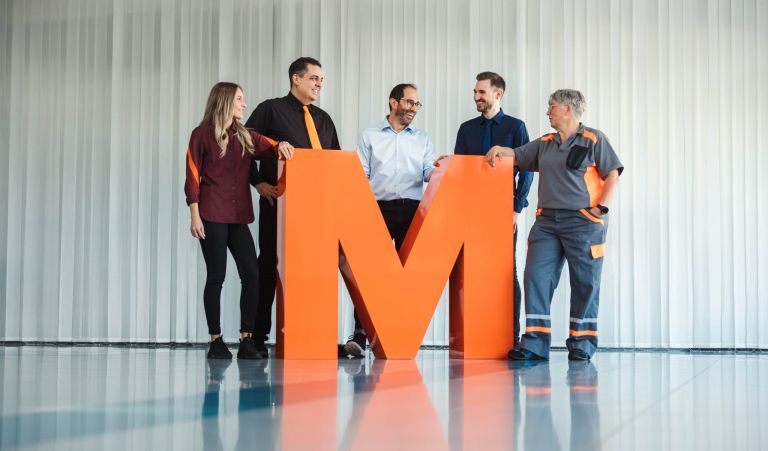
Discover how Migros revolutionizes the workplace with its commitment to work-life integration. Explore their emphasis on part-time positions, hybrid work models, and leadership support, creating an environment where employees can flourish.

Implementing a holistic 4 pillar pay equity framework led to decreasing the pay gap to under 1% - and keeping it there.

Leaders insisting on pay equity and undertaking serious independent analyses builds trust and a culture of inclusion.

A customised internal salary modelling tool ensures fair salaries and strengthens employee confidence.

The full pay flexibility deal allows new parents to decide how they want to manage the transition back to work.

Looking beyond data helps Syngenta make pay equity a fundamental element of the company's culture rather than just a project to tick off.

Chances for promotions are equal for full-time and part-time employees thanks to a strong culture of flexible working.

#sharethecare shifts the narrative from ‘caregiving is strictly a woman’s responsibility’ to ‘caregiving is for both parents’. A bold ambition aiming to cultural change.

A gender diversity checklist makes sure that women have equal chances in the recruiting process.